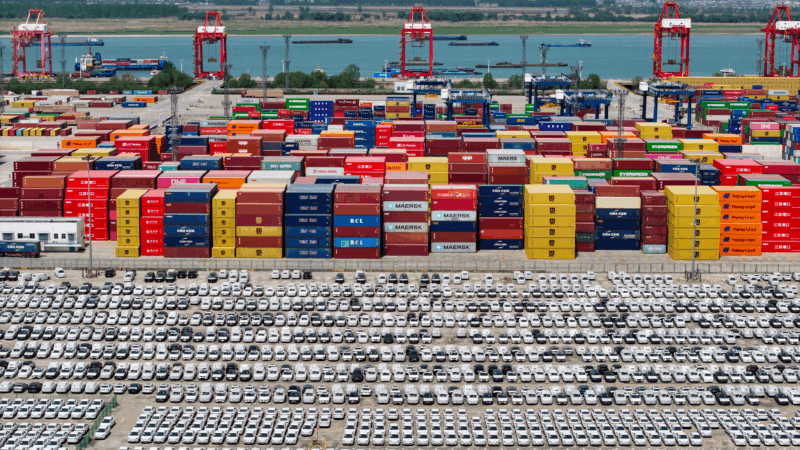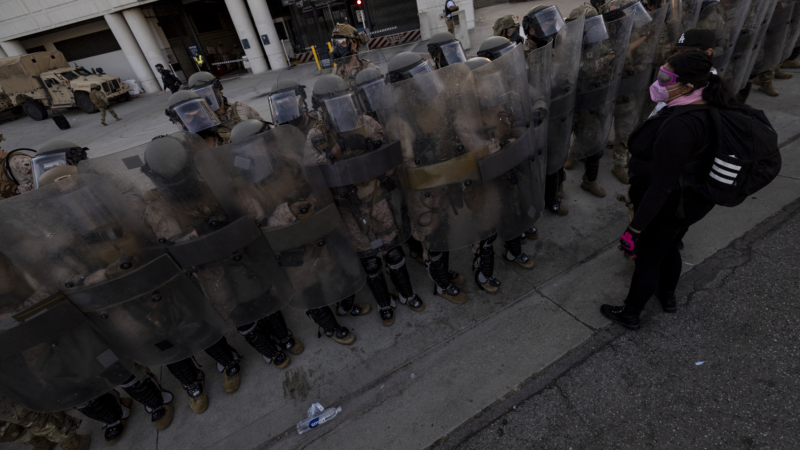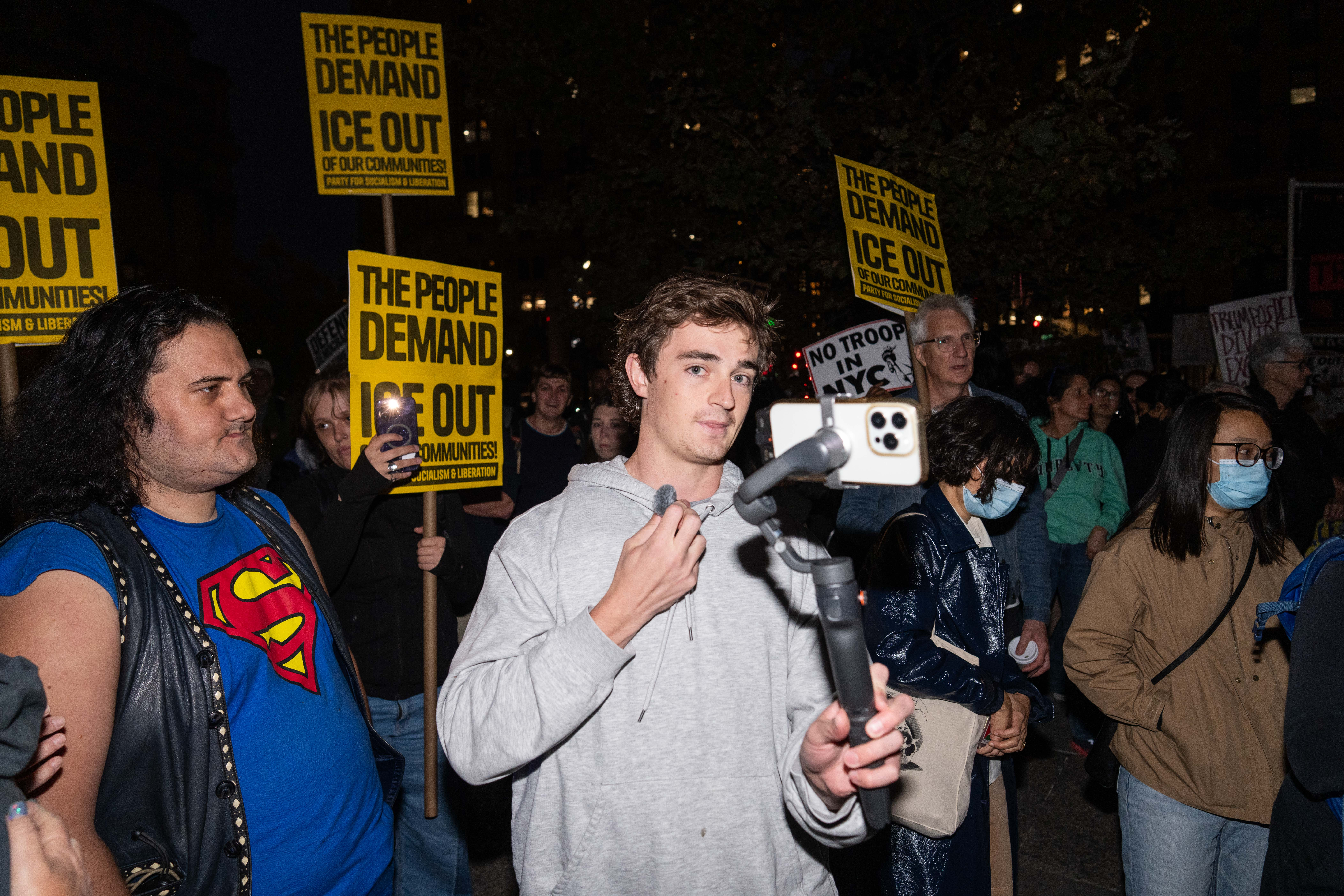First, relief. Then, a scramble to get stuff in after U.S. cuts China tariffs for now
For Bonnie Ross, a clothing importer based in New York, news that the U.S. would temporarily cut tariffs on China came as a relief — at least for a short time.
“It was a great relief for about five minutes,” Ross says.
Then the scramble began.
Ross had pulled two cargo containers off ships in China when the 145% tariffs took effect last month. Now she’s trying to get as much merchandise to the U.S. as she can while the lower tariffs are in place.
Still, she worries that other businesses will be in the same crowded boat.
“Now it’s going to be a rush because everybody wants it out in the next 90 days,” Ross says. “What is going to happen to the freight rates?”
For business owners like Ross, a cut in tariffs on China is welcome news — but it also prolongs uncertainty.
Although the U.S. and China agreed to slash the crippling tariffs they had imposed on each other, the lower import taxes are set to last for only 90 days — with no certainty of what happens afterward.
The tax on Chinese imports to the U.S. will drop from 145% to 30%, while the tariff China charges on U.S. goods will fall from 125% to 10%. The remaining tariffs are still significantly higher than the U.S. was charging before President Trump launched his trade war.
Getting through the next four to six weeks
Jay Foreman, whose Florida-based company makes Tinkertoys, Lincoln Logs and other toys in China, got news of the deal at 4:30 a.m. and immediately called associates in Hong Kong to begin scheduling shipments.
“We’ve been holding everything at the factories and at the ports, because we didn’t want to risk putting anything on containers with a 145% tariff,” Foreman says.
He says a 30% import tax is more manageable, although at least some of that cost will have to be passed on to consumers in the form of higher prices.
“It’s a complete disruption, but obviously I’m sure everybody in the supply chain would agree it’s better than it was,” Foreman says.
Some businesses may race to produce and ship products early for the Christmas holiday season to avoid the risk of higher tariffs in the fall. But that’s also a gamble, Foreman says, because it’s possible the administration will order lower tariffs at the end of the three-month window.
“Right now, I’m just trying to get through the next four to six weeks,” he says. “Whether I double-shift the factories to try to get more produced and out the door before the end of the 90 days, I’ll probably need another three to four weeks to figure that out.”
A temporary deal is still better than none
Jonathan Silva runs a company in Massachusetts that produces high-end board games in China. He has nine containers of merchandise that he has been holding in China that he will now send to the United States.
“We need to get product back on shelves,” Silva says. “I think that we were really getting close to the tipping point of starting to see some shortages.”
“30% — it’s not ideal,” he adds. “I think there will be slight price increases.”

But at least Silva is no longer afraid of going bankrupt.
For now, like other business owners, he’s scrambling to produce and ship more games in time for the holiday shopping season.
“The spigot was turned on,” Silva says. “Everyone is going to be placing orders over the course of the next week, and we’re placing our orders today for what we think we can get done in the next 90 days and try to save as much business for the holidays as we can.”
Whatever the tariff landscape looks like in 90 days, Silva says he’ll be exploring alternatives to manufacturing in China, including other Asian countries and the United States.
“The past 40 days has been the hardest 40 days in all of our business’s life,” he says. “And I’m glad that we’re going to be able to come out of it. But we don’t know what’s going to happen tomorrow. It’s very unpredictable.”
Trump will drop push for National Guard deployments in Chicago, LA and Portland, Ore.
Courts blocked troops from deploying in Chicago and Portland, Ore., and the Los Angeles deployment effectively ended after a judge blocked it earlier this month.
What Stranger Things gets right about wormholes
The final episode of fifth season of the Netflix series Stranger Things is out this week, and the concept of a wormhole figures largely into it. While the show is a work of fiction, theoretical wormholes have making appearances for decades not only in science fiction but in actual science.
Photos: The world welcomes the new year
As fireworks light the sky and crowds count down together, communities around the globe welcome 2026.
Meet five new species discovered in 2025
A bumpy snailfish, Andean mouse opossum and ancient sea cow were just some of the many species described in 2025.
What to know about Nick Shirley, the YouTuber alleging daycare fraud in Minnesota
Shirley is a 23-year-old self-described "independent YouTube journalist" who made prank videos in high school before pivoting to politics. He participated in a White House roundtable in October.
Greetings from Vienna, where an imperial palace hosts a holiday market for all
Far-Flung Postcards is a weekly series in which NPR's international team shares moments from their lives and work around the world.







